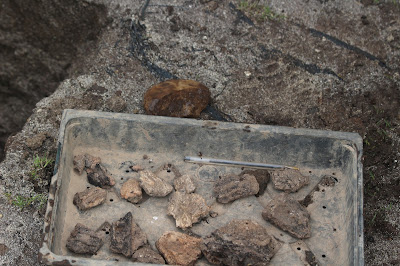| For some reason this site was abandoned by its occupants and, in the process, there seems to have been a ritualistic 'closure' of the area. They didn't just leave and let the elements take over. Items of value and significance were left behind and then, as we've seen elsewhere, the site was covered with domestic refuse called midden., This midden is wonderful stuff as it contains all sorts of artifacts that excite the archaeologists. They love a bit of stratification and will scrape away happily for hours with their tiny trowels and fine-hair brushes. |
















No comments:
Post a Comment